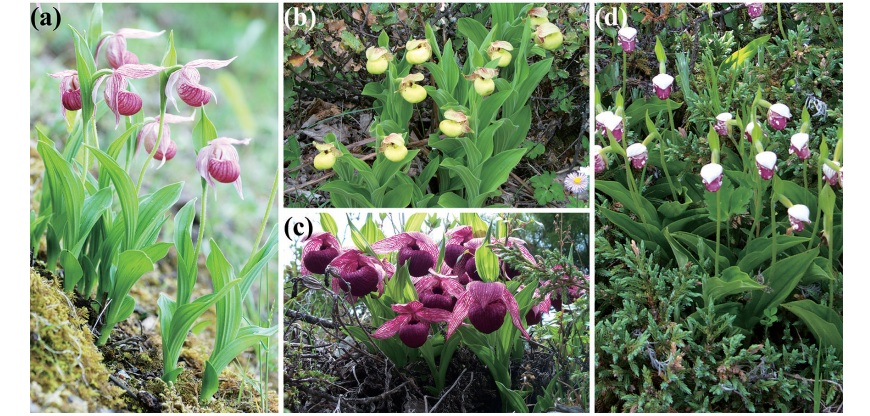

Received date: 2021-10-09
Online published: 2021-12-21

ZHOU Zhekun, CHEN Linlin . Plant diversity in Yunnan province[J]. Chinese Journal of Nature, 2021 , 43(6) : 459 -466 . DOI: 10.3969/j.issn.0253-9608.2021.06.008
[1] 王宇. 云南山地气候[M]. 昆明: 云南科技出版社, 2005.
[2] QIAN L S, CHEN J H, DENG T, et al. Plant diversity in Yunnan: Current status and future directions [J]. Plant diversity, 2020, 42(4): 281-291. DOI: 10.1016/j.pld.2020.07.006.
[3] 高正文, 孙航. 云南省生物物种名录(2016版)[M]. 昆明: 云南科技 出版社, 2017.
[4] ENROTH J, SHEVOCK J R, IGNATOV M S. Mawenzhangia thamnobryoides (Bryophyta, Lembophyllaceae), a new moss genus and species from the Shangri-la region of Yunnan Province, China [J]. Phytotaxa, 2018, 346(3): 237. DOI: 10.11646/phytotaxa.346.3.3.
[5] ZHOU Z, GU B J, SUN H, et al. Molecular phylogenetic analyses of Euphorbiaceae tribe Epiprineae, with the description of a new genus, Tsaiodendron gen. nov., from south-western China [J]. Botanical Journal of the Linnean Society, 2017, 184: 167-184.
[6] 李晓贤, 陈文允, 管开云, 等. 滇西北野生观赏花卉调查[J]. 云南 植物研究, 2003, 25(4): 435-446.
[7] 杨宇明, 王娟, 王建皓, 等. 云南生物多样性及其保护研究[M]. 北 京: 科学出版社, 2008.
[8] 陈丽 , 董洪进 , 彭华 . 云南省高等植物多样性与分布状 况[J]. 生物多样性, 2013, 21(3): 359-363. DOI: 10.3724/ SP.J.1003.2013.05162. [9] 吴征镒, 朱彦丞, 姜汉侨. 云南植被[M]. 北京: 科学出版社, 1987.
[10] 邓敏, 周浙昆. 滇西北高山流石滩植物多样性[J]. 云南植物研究, 2004, 26(1): 23-24.
[11] CLARK M K, HOUSE M A, ROYDEN L H, et al. Late Cenozoic uplift of southeastern Tibet [J]. Geology, 2005, 33(6): 525-528.
[12] SCHOENBOHM L M, BURCHFIEL B C, CHEN L Z. Propagation of surface uplift, lower crustal flow, and Cenozoic tectonics of the southeast margin of the Tibetan Plateau [J]. Geology, 2006, 34: 813- 816. DOI: 10.1029/2002TC001402.
[13] ROYDEN L H, BURCHFIEL B C, VAN DER HILST R D. The geological evolution of the Tibetan Plateau [J]. Science, 2008, 231: 1054-1058. DOI: 10.1029/2001TC001322.
[14] ZHENG H, CLIFT P D, WANG P, et al. Pre-Miocene birth of the Yangtze River [J]. Proceedings of the National Academy of Sciences of the United States of America, 2013, 110(19): 7556-7561. DOI: 10.1073/pnas.1216241110.
[15] SHRN X, TIAN Y, LI D, et al. Oligocene-Early Miocene river incision near the first bend of the Yangze River: Insights from apatite (U-Th-Sm)/He thermochronology [J]. Tectonophysics, 2016, 687(1): 223-231. DOI: 10.1016/j.tecto.2016.08.006.
[16] GOURBETbet L, LELOUP P H, PAQUETTE J-L, et al. Reappraisal of the Jianchuan Cenozoic basin stratigraphy and its implications on the SE Tibetan plateau evolution [J]. Tectonophysics, 2017, 700/701: 162-179. DOI: 10.1016/j.tecto.2017.02.007.
[17] NIE J, RUETENIK G, GALLAGHER K, et al. Rapid incision of the Mekong River in the middle Miocene linked to monsoonal precipitation [J]. Nature Geoscience, 2018, 11(12): 944-948. DOI: 10.1038/s41561-018-0244-z.
[18] JARAMILLO C, RUEDA M J, MORA G. Cenozoic plant diversity in the Neotropics [J]. Science, 2006, 311(5769): 1893-1896. DOI: 10.1126/science.1121380.
[19] LI R, KRAFT N J B, YANG J, et al. A phylogenetically informed delineation of floristic regions within a biodiversity hotspot in Yunnan, China [J]. Scientific Reports, 2015, 5: 9396. DOI: 10.1038/ srep09396.
[20] 中国科学院昆明植物研究所. 云南植物志[M]. 昆明: 科学出版社, 1977-2010.
[21] 高正文, 孙航. 云南省生物物种红色名录(2017版)[M]. 昆明: 云南 科技出版社, 2021.
[22] 邓涛,杨梅. 《云南省生态系统名录(2018版)》发布[EB/OL]. 中国科学院昆明植物研究所.(2018-05-22). [2021-10-09]. http:// www.kib.ac.cn/xwzx/zhxw/201805/t20180522_5015737.html.
[23] 杨梅,邓涛. 《云南省外来入侵物种名录(2019版)》发布[EB/OL] .中 国科学院昆明植物研究所. (2019-05-22). [2021-10-09]. http:// www.kib.ac.cn/xwzx/ttxw/201905/t20190522_5300235.html.
[24] 于富强. 云南建设“中国西南野生生物种质资源库”的有关情 况[C] // 云南省网上新闻发布厅. 云南生物多样性保护系列新闻 发布会·云南生物多样性保护工作综合新闻发布会. 昆明, 2021.
[25] 杨质高. 云南极小种群物种保护成效显著[N]. 云南日报, 2021-09- 08(5).
[26] 中国植物园联盟秘书处. 中国植物园联盟建设工作取得阶段性 成效[N]. 中国科学院简报, 2015-11-27.
/
| 〈 |
|
〉 |